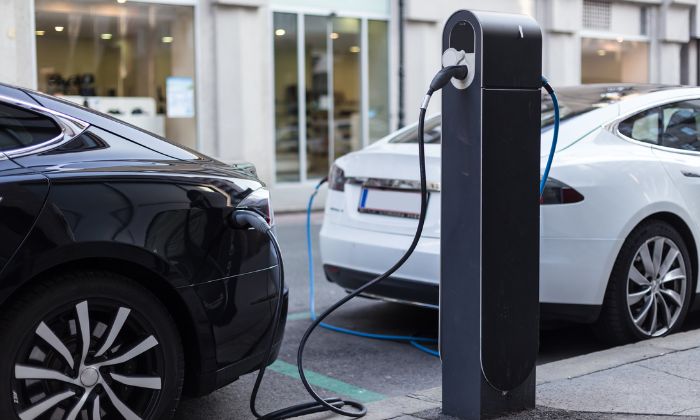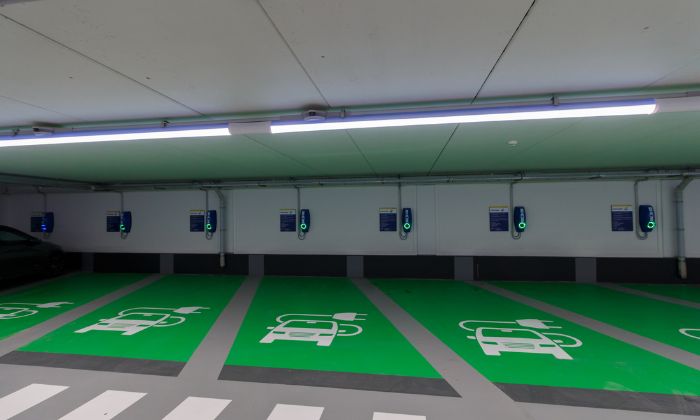Loading component...
Get up to speed on the mobility industry - our newsletter straight to your inbox!
Get up to speed on the mobility industry - our newsletter straight to your inbox!

From an EPA perspective, our members were struggling with how to address the hurdles that need to be overcome when implementing EV charging infrastructure
Through AVERE, the European association for electromobility, we were invited to contribute to a European Commission expert group working on the topic of fire safety in covered car parks

EV range is expanding and drivers have the option to charge at home, and at the same time there's a clear trend towards removing on-street parking spaces in city centres
“Cities really do need a solution for storing these cars somewhere else. The best alternative is to look into car parks, and in particular, underground car parks are a good alternative for that. This is, after all, where most cars, particularly in a business environment, live during the day, and where offering charging facilities really makes a difference, and addresses the demand,” he replies.
“And I think it’s also important to realise that if you're looking at offering EV charging then private car park operators will invest in those types of facilities, but only if there's a certain demand. So investing in EV charging facilities, without a clear demand, or a foreseeable demand in the near future isn't going to help us much.”
Dingemans says that the EV charging sector as an entity is looking for innovative solutions that can help to address this pressing issue by looking into the smart power management solutions that facilitate the local generation of energy.
“We’re looking at instances where solar power can be used to charge local energy storage, if possible in combination with the latest generation of EVs to reduce the need for external power sourcing.”
In November 2019 Intertraffic ran an article that explored EV charging options but one solution that wasn’t covered was Vehicle-to-Grid systems, or V2G, something that residents of Amsterdam are very familiar with.
We’re looking at instances where solar power can be used to charge local energy storage, if possible in combination with the latest generation of EVs to reduce the need for external power sourcing
“V2G is part of the smart solution I mentioned. The car itself can help as a sort of temporary buffer to spread out the peaks during specific times of the day. If you're looking at tariff differentiation, you can expect that we will, in the near future, see new models of tariff calculations and schemes around that will allow you as an EV driver to set a certain level of capacity that you will need in order to be able to drive home at the end of the day,” he explains. “If you set that level to 60% then the remaining 40% of the charge that you still have in your car can be used for charging other cars, or local energy storage solutions.
“This way you're taking out the energy consumption peaks, which also means that it's a more stabilised way of using the energy that's available and required. This all has to do with the capability to communicate with cars and the grid using the mechanisms and protocols that are in place,” Dingemans continues. “You are helping to stabilise and facilitate the available energy in your area.”

This, then, is yet another example of how behavioural change is integral to the success of what is, essentially, a traffic management solution; a scenario where every actor needs incentivising at some point in the process.
“There's a lot of price elasticity in this scenario, but at some point people may want to change their behaviour,” Dingemans adds. “And I don't think that's going to be viewed as a one-size-fits-all solution alluded to earlier. But I think that due to the increasing traffic jams, the cost of transportation, the cost of parking… a certain level of momentum will build up to the point where people do want to change their behaviour.”
Due to increasing traffic jams, the cost of transportation, the cost of parking… a certain level of momentum will build up to the point where people will want to change their behaviour”
Peter Dingemans is managing director of Dingemans Management BV; Board Member of the European Parking Association (EPA) and Co-Chair of the EPA’s EV & Fire Safety Working Group; and he is a Board Member of VEXPAN, the Dutch parking association